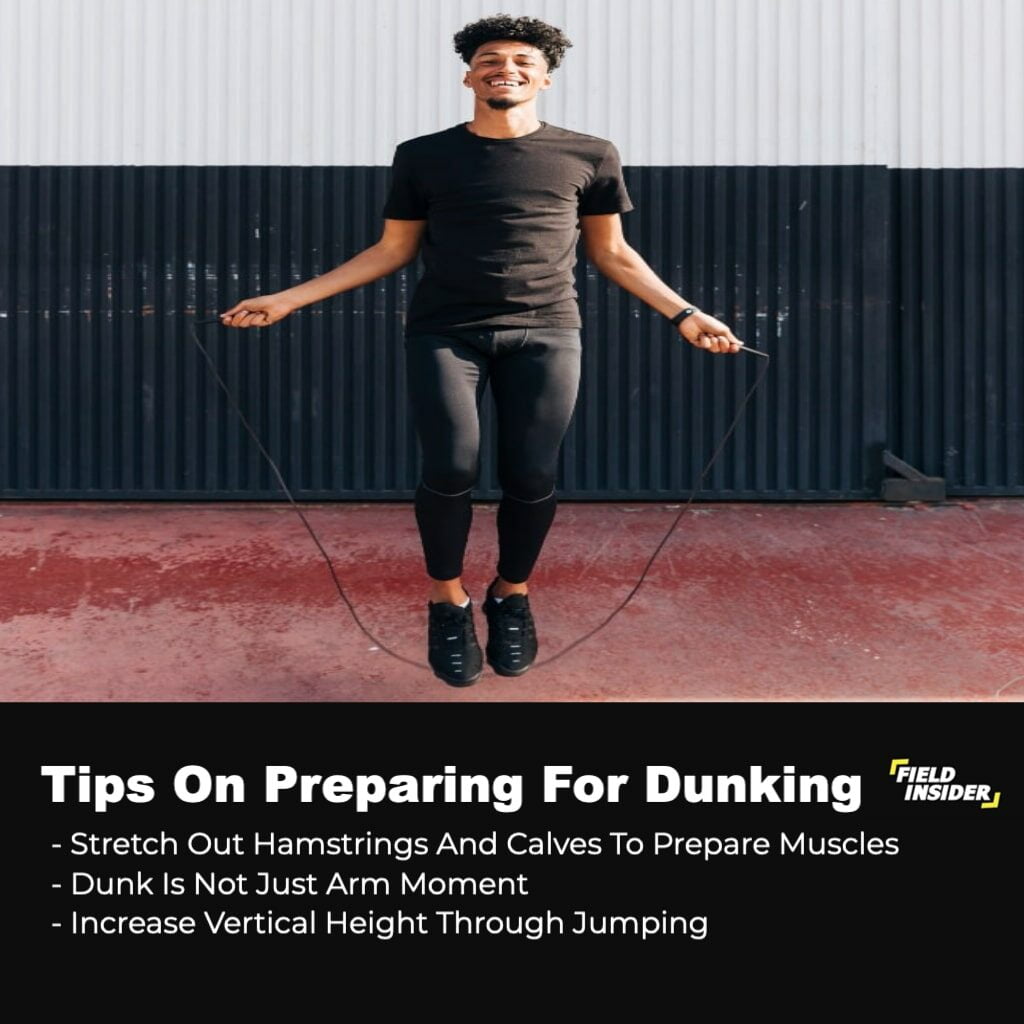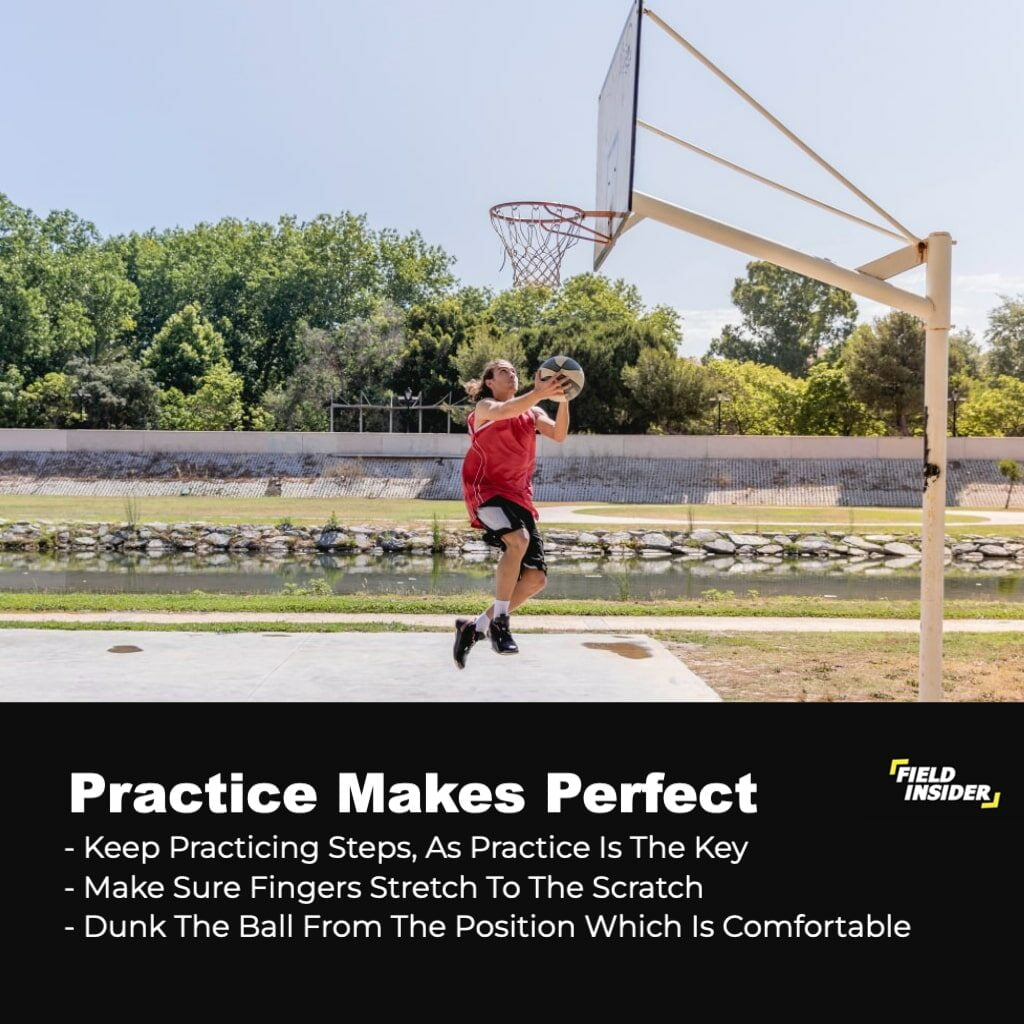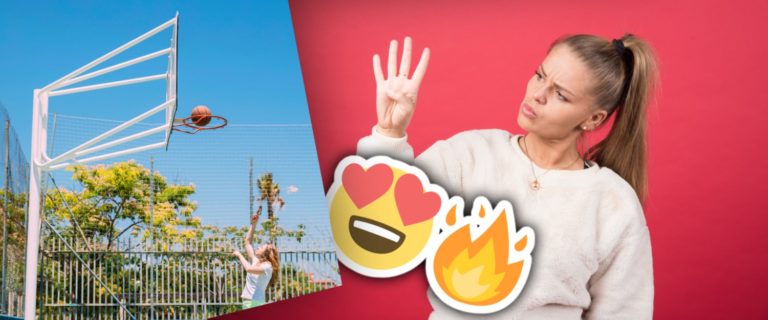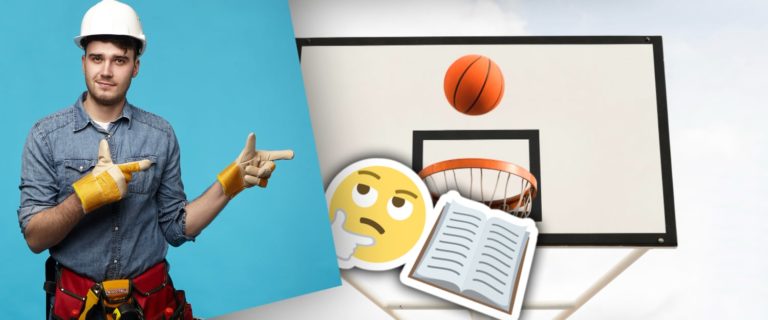How To Dunk A Basketball: The Ultimate Guide
If you’ve ever watched an NBA dunk contest and thought to yourself, “I could do that,” then this post is for you. We’re going to break down dunking a basketball into simple steps. And provide some tips on how to train for it. Here’s our ultimate guide on how to dunk a basketball.
This blog post will cover every step of the dunk as well as ways you can train for it. Dunking seems like such an impossible task but doesn’t worry; we’ll break it down in easy-to-follow steps and provide some helpful training advice too!
What is Dunking in Basketball?
Dunking is when a player jumps up and dunks the basketball in one fluid motion. A dunk has to be performed over another person; if you can dunk on someone, then that’s considered a flagrant foul or an assault. Dunking is also referred to as “slam dunk” which makes it easy to remember what they’re called!

Tips on Getting your first Dunk?
There are 3 main factors on getting your 1st dunk. Of course it’s a huge help when someone is tall such as being 6 foot 5 or taller. But what about the shorter people? Never lose hope because there are scientifically proven methods to help you get your 1st dunk. The top 3 factors are mainly: Strength Training, Nutrition, and Body Composition. We will be discussing them next.
Strength Training
To be able to slam dunk a basketball, you must develop your vertical jump. Combining strength, explosiveness, and technique is necessary for dunking. The following advice can help you increase your vertical jump and thus your ability to dunk:
- Strenghten your legs:
- Strengthening your legs is important because they are the primary muscles engaged when jumping. Exercises that specifically target your leg muscles include squats, lunges, and calf raises. To increase your explosiveness, you can also include plyometric activities like box jumps and jump squats.
- Develop your core:
- Get more core strength because it will help you keep your body stable during takeoff and landing. Planks, sit-ups, and Russian twists are all exercises that will help you develop a strong core.
- Develop your technique:
- Dunking requires both strength and technique. By practicing jumping off one foot and two feet, you can improve your jumping technique. Concentrate on raising your body as high as you can while yet remaining in control.
- Stretch:
- To increase your vertical jump, flexibility is essential. Stretching out your back, hips, and legs will help you jump higher.
- Plyometrics:
- Jump training is specialized exercise that concentrates on raising your jumping abilities. You can build the explosiveness required for dunking by performing exercises like depth jumps, jump squats, and broad jumps.
- Get enough sleep:
- Sleep is essential for promoting muscle growth and recovery. To prevent overtraining, make sure you’re getting adequate sleep and taking rest days.
- Stay Consistent:
- Consistency is essential for observing growth. Make sure you’re following a training schedule and keeping track of your development to see how you’re progressing.
By incorporating these tips into your training routine, you can improve your vertical jump and increase your chances of being able to dunk a basketball. However, it’s important to note that everyone’s body is different, and it may take some time to see results. You must be persistent and patient in order to reach your ultimate objectives.
Nutrition
Many athletes seek to reduce fat while retaining their muscle mass. In the world of professional dunking, there is a terms usually said “Fat Don’t Fly.” Body fat is just excess luggage since it doesn’t have a function in producing force, it just weighs people down more. Here are some tips for achieving this objective through appropriate nutrition:
- Eat fewer calories:
- A calorie deficit must be produced in order to lose fat. You can do this by consuming fewer calories, either by controlling your portion sizes or by consuming lower-calorie meals.
- Boost your protein intake:
- Protein is necessary to keep muscular mass. Strive to consume at least 1.6 grams of protein per kilogram of body weight each day. Lean meats, chicken, fish, eggs, dairy products, and plant-based sources including beans, tofu, and tempeh are all excellent sources of protein.
- Put an emphasis on full, nutritious foods:
- Choose wholesome, nutritious foods like whole grains, lean proteins, fruits, veggies, and healthy fats. These meals can help you feel satiated for longer because they often have fewer calories and more nutrients.
- Reduce your intake of processed foods and sugars:
- Processed meals and added sugars frequently have high calorie counts and few nutritional benefits. Moreover, they may increase bodily inflammation, which may obstruct fat loss. Limit these foods as little as you can.
- Remain hydrated:
- Water consumption is crucial for fat loss because it can increase metabolism and decrease appetite. Aim for 8 to 10 glasses of water a day, minimum.
- Proper meal timing:
- Some athletes find it beneficial to schedule their meals around their workouts. Before working exercise, for instance, eating a meal heavy in protein and carbohydrates can help with energy and support muscle building. After a workout, consuming a protein-rich meal can aid in promoting muscle healing and regeneration.
- Consult with a licensed dietitian:
- Your individualized nutrition plan can be developed with assistance from a qualified dietitian to match your objectives and needs. Also, they can offer advice on nutritional supplements like protein powder, caffeine, and green tea extract that may aid in your efforts to lose weight.
Keep in mind that fat loss involves patience and consistency. You can reach your fat loss objectives while keeping your muscle mass and general health by adhering to a healthy nutrition plan and including regular exercise.
Body Composition
A professional dunker should have a body composition that maximizes their jumping ability and explosiveness while maintaining general health. Having less body fat and more muscular mass, especially in the legs and core muscles, is usually required for this.
Professional dunkers frequently concentrate on strength and conditioning training to increase explosive power in their legs and enhance their jumping abilities in order to accomplish this. They also frequently adhere to a diet that promotes muscle development and recovery while reducing body fat.
Professional Dunkers often strive for a body fat level between 6 and 12%. Depending on the body type and objectives of the individual athlete, this range may vary slightly.
It’s crucial to remember that a balanced approach to nutrition and exercise is necessary to achieve a low body fat percentage and high muscle mass. A sports nutritionist and strength and conditioning coach should collaborate with a professional dunker to create a specialized strategy that addresses their unique requirements and goals while also placing a high priority on their general health and wellbeing.

The Dunk – Step-by-Step
Grab a basketball, stand about three feet away from the basket, and make sure you have a run-up of about five steps.
Make Sure Your Fingers are Flexible and Grippy
When dunking the basketball, you need to hold it with your dominant hand while doing so! This means that if you’re right-handed then dunk the ball with your right and vice versa for left-handed players. You also need strong fingers which is why we recommend working on this during training too.
Simply grip some tennis balls or roll them around in your hands at home/at work until they become softer. When dunking a basketball, you’re going to be putting all pressure down onto one finger. So avoid injuries by making sure yours are flexible and grippy enough before attempting any dunks!
Keep Your Spine Straight and Head-Up!
When dunking, you need to keep your spine as straight as possible. If it’s curved then this could lead to back injuries from trying to dunk a basketball which is why we recommend keeping the above advice in mind too.
You also want to make sure that when dunking a basketball you jump high enough so don’t forget about our tips on how to improve your vertical below either!
Bring The Ball To Your Upper Chest And Extend Your Arm Outwards
Keep bringing the ball upwards until you’re at chest level – some people prefer dunking with two hands but if that doesn’t feel comfortable for you then go and do one hand instead. Your dominant hand should be on the ball and your other arm will extend outwards.
This is where you need to make sure that you dunk high enough so aim for the top of the backboard if this sounds like a new technique to you.
Bring The Ball Down And Extend Your Arm Outwards Again
Now dunking is going to involve repeating some movements several times, just keep in mind that every time we’re talking about dunking a basketball!
Next up bring down your stretched-out, the non-dominant arm which has been holding onto the ball until it reaches eye level then follow through by extending it outwards again before bringing everything upwards once more.
Repeat these steps many times until eventually, they become second nature – dunking a basketball is not easy but with some practice, you will get it!
Bring The Dunk Down And Extend Your Arm Outwards Once More
Bring dunking down once more until your arm reaches the height of your waist then extend outwards one last time. Remember to keep everything straight and make sure that when dunking a basketball, you jump high enough so don’t forget about our tips on how to improve your vertical below either!
Practice Makes Perfect – Don’t Give Up Yet!
We know dunking seems like an impossible task especially if this is new for you – trust us though, we’ve been there before. Keep practicing these steps over and over again every day to dunk a basketball and make sure that your finger strength is up to scratch too!

Extra Tip
Now, when dunking the ball you can either bring it down in front of your face or behind depending on which feels more comfortable for you. You also want to be careful with how high you jump when dunking as sometimes if we’re not used to dunking then this could lead to injuries.
Can I Train to Dunk a Basketball?
Absolutely! We’ve provided you with lots of great tips to dunk a basketball and now it’s time to put them into action. Remember that dunking is an art form – not everyone can do it which makes dunkers like Vince Carter or Michael Jordan legends in their game.
It might take some practice before dunking becomes second nature for you but once you get the hang of things, we guarantee there will be no stopping your dunks!
Technique for Dunking a Basketball
If dunking a basketball is something you’ve been working on for a while, then footwork might be your biggest problem. This will make or break any dunk attempt so it’s important to get this right.
Footwork
Keep both feet shoulder-width apart when standing away from the basket and jump off of one leg (the opposite leg should be slightly bent). Try not to look down at where your feet land but instead focus solely on dunking the ball – if you find yourself nervous about dunking in front of an audience then practice doing it alone behind closed doors until perfect!
Watch Your Dunk
If dunking on a regulation-sized rim then you’ll want to dunk the ball from your chest and not your forehead – this is because if dunking on an NBA hoop, it’s about ten feet away but only nine feet for NCAA regulation rims which force players to jump higher to dunk successfully!
Extend Your Arms
Be sure that while going up for a dunk attempt, both arms need to be fully extended at all times! This signals the referee that you’re ready to go and nothing will stop you from completing such an amazing feat!
Repeat
Try performing several of these drills before attempting another slam dunk again so that when it comes time for game day or just a normal practice session, everything flows smoothly into one beautiful play. You’ll find dunking a basketball is easier than ever and dunk contests will no longer be an issue!
Can a 5 Foot 11 Person Dunk?
Of course, dunking is possible for people of all heights and we’re willing to bet that dunk contests would be far more interesting if they were open to everyone – dunking a basketball should not be limited by height; it’s an art form!
Every time you see someone dunk, it’s like witnessing one of the best things in life. This doesn’t mean though that dunking is only meant for tall people as there are plenty of us out there who can do this too no matter what your stature may look like!
We don’t necessarily believe that dunkers are born but instead made through hard work and practice so let these tips on how to improve vertical get you started with your journey!
Conclusion
There are so many different ways for dunking but these tips should help get you started – good luck out there! Remember that dunking seems impossible but with practice comes great results which means dunkin’ in no time flat! Dunkin’ isn’t hard once you know how…
We hope that this guide has been helpful, remember: keep working hard, and one day soon enough all of your dunking dreams will come true!








